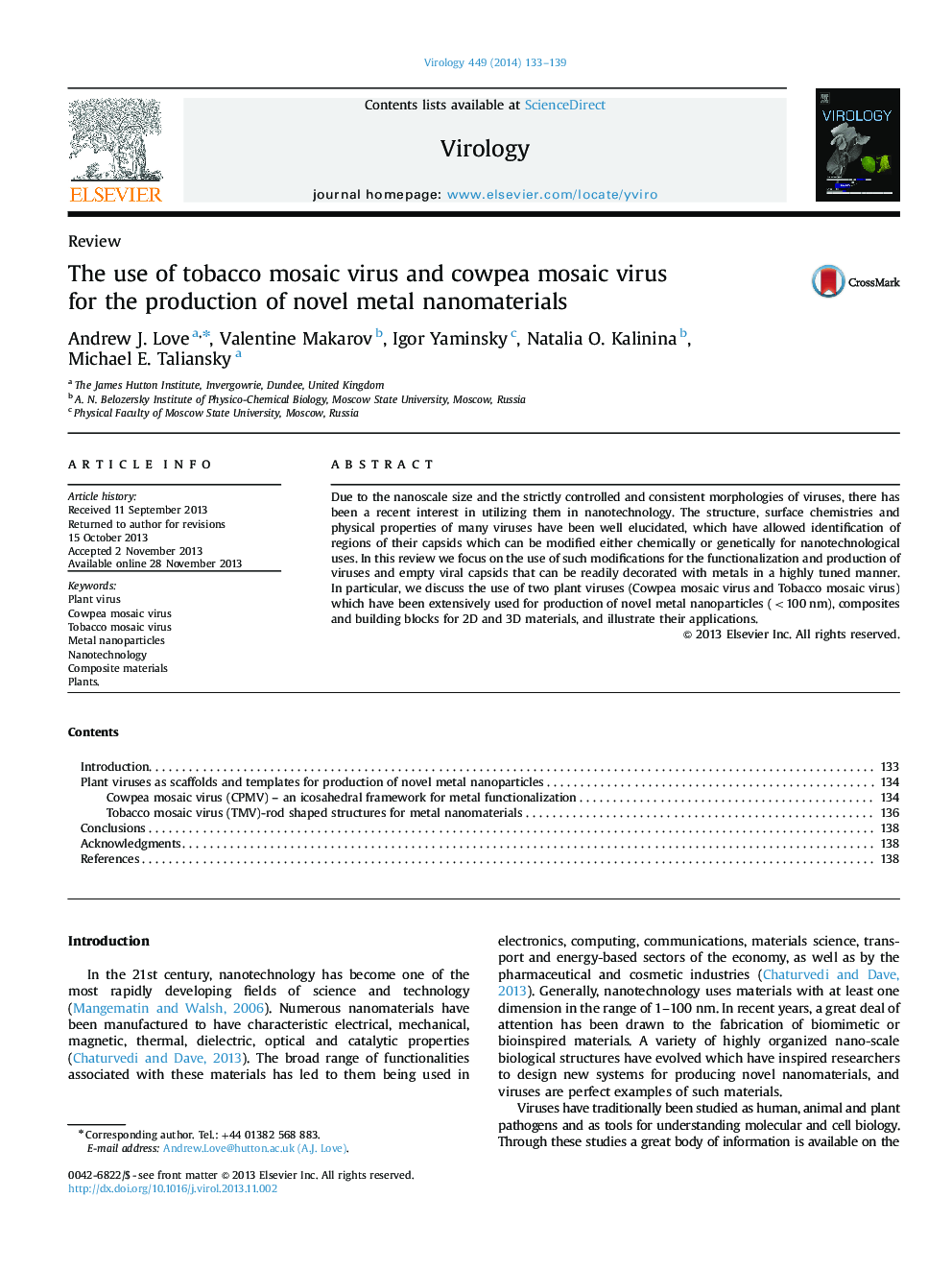| Article ID | Journal | Published Year | Pages | File Type |
|---|---|---|---|---|
| 6140554 | Virology | 2014 | 7 Pages |
â¢Review of metal nanomaterials produced using Cowpea mosaic and Tobacco mosaic viruses.â¢Viruses can be easily modified to create new metal nanomaterials.â¢Functional metal nanoparticles, 2D and 3D materials have been produced using viruses.
Due to the nanoscale size and the strictly controlled and consistent morphologies of viruses, there has been a recent interest in utilizing them in nanotechnology. The structure, surface chemistries and physical properties of many viruses have been well elucidated, which have allowed identification of regions of their capsids which can be modified either chemically or genetically for nanotechnological uses. In this review we focus on the use of such modifications for the functionalization and production of viruses and empty viral capsids that can be readily decorated with metals in a highly tuned manner. In particular, we discuss the use of two plant viruses (Cowpea mosaic virus and Tobacco mosaic virus) which have been extensively used for production of novel metal nanoparticles (<100Â nm), composites and building blocks for 2D and 3D materials, and illustrate their applications.
